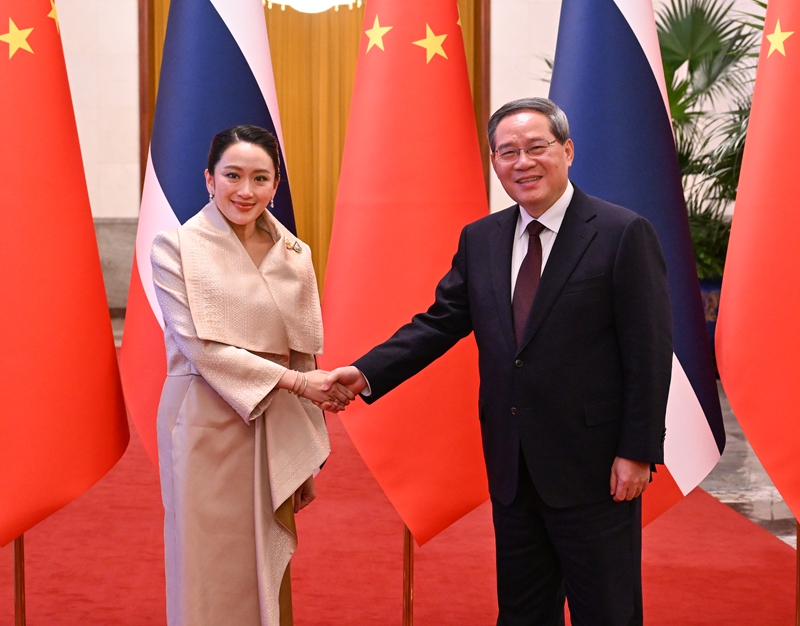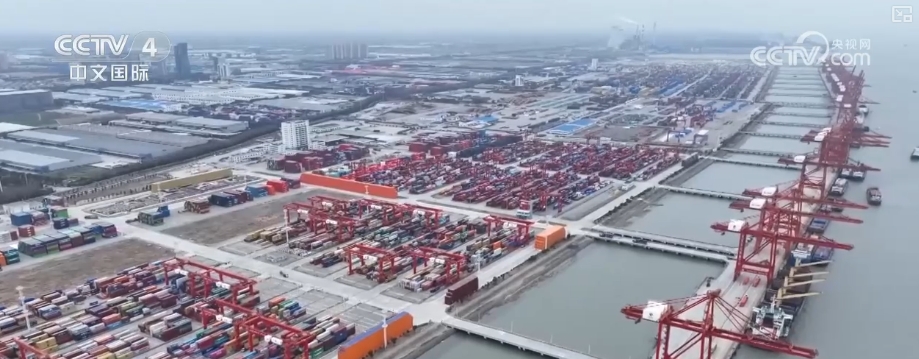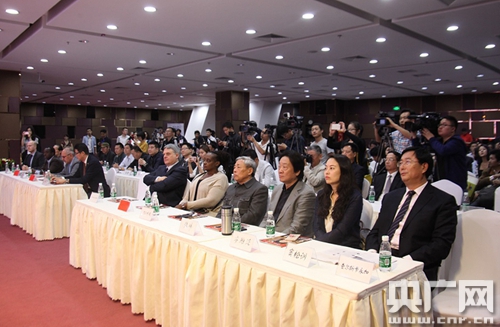Goldman Sachs: Can The Internationalization Of The RMB Be Different This Time?
Goldman Sachs: Can The Internationalization Of The RMB Be Different This Time?
Goldman Sachs’ main point of view – 15 years after China promoted the internationalization of the RMB, the proportion of the RMB in the global financial field remains low. Several indicators show that the international use of the RMB is less than half of the pound, which is far from the US dollar.
China officially launched the internationalization of the RMB in 2009. Now 15 years have passed, but the results of this process are somewhat "contradictory" - on the one hand, China is already the world's largest country in goods trade, with a proportion of added value of manufacturing accounting for 33%. For more than 140 countries, China's trading partner status is more important than that of the United States; on the other hand, the RMB's presence in the global financial field is still obviously insufficient.
Goldman Sachs’ latest release of “Internationalization of RMB: Can it be different this time? 》 report shows that if the "International Currency Usage Index" is weighted using five indicators such as foreign exchange reserve ratio, foreign exchange trading volume, and foreign currency bond issuance, the RMB in 2024 was only 2.8, far lower than the US dollar's 66.6, the euro's 23.8, and even less than half of the British pound (6.4) and the Japanese yen (7.2) (Figure 1). However, the current changes in the global geopolitical landscape may open up new possibilities for the internationalization of the RMB.

1. Current situation: China's economy is "full of weight" and the RMB is "light of play"
China's weight in the global economy has long been different. Since 2000, China's GDP share in the world has increased from 6% to 19%, an increase of 13 percentage points; while the GDP share in the United States and the euro zone has decreased by 5 and 19 percentage points respectively, and the proportion of Japan and the United Kingdom has continued to decline. Not to mention the trade field, China has surpassed the United States to become the world's largest country in goods trade, with manufacturing added value accounting for 1/3 of the world, and is a "core trading partner" for most countries.
However, the international use of the RMB has failed to keep up with the "step" of China's economy. Judging from the classic three steps of currency internationalization (trade settlement → financial transaction → central bank reserves), the RMB has only made initial progress in the first step, and the last two steps are still significantly lagging behind.
In the trade settlement and pricing process, the RMB started late but was slowly increasing. For example, in Thailand, China's share of Thailand's imports rose from 20% to 26% from 2015 to 2024, and the proportion of RMB in Thailand's import collections also rose from 0.4% to 3.8% during the same period - Interestingly, the RMB mainly replaces the Japanese yen (the proportion of Japanese yen in Thailand's imports fell by 3 percentage points), rather than the US dollar (see the figure below).

SWIFT data also shows that the RMB's share in global trade financing continues to rise (insert Figure 13), but the overall base is still very low. After all, the US dollar still accounts for 50% of global trade (price), and the US dollar still accounts for as high as 93% in the Americas.

In the deep links of financial transactions and markets, the gap between the RMB is more obvious. Whether it is foreign currency bank deposits and loans, foreign currency bond issuance, or foreign exchange trading volume, the proportion of RMB is far lower than that of major international currencies. The key reason lies in the policy: if foreign capital wants to invest in stocks and bonds in China, it must go through specific channels such as QFII, Shanghai-Shenzhen-Hong Kong Stock Connect, and Bond Market Connect; and the market size of China's government bonds (CGB) is limited. It was not until 2025 that the official fiscal deficit (including CGB issuance) exceeded 3% of GDP for the first time, and although the broad fiscal deficit in the past 10 years exceeded 10%, it is more not reflected in the official caliber. In addition, investors lack tools to hedge exchange rate risks, which also reduces their willingness to hold RMB assets.
In the central bank's foreign exchange reserves process, the proportion of RMB has been hovering around 2% for a long time (see the figure below).

Behind this is the superposition of multiple factors: the limited use of the RMB in trade denomination and financial transactions has resulted in central banks of various countries not requiring large holdings; global central banks have tended to increase their holdings of gold or small economies to diversify risks in recent years. Although the US dollar still dominates (about 60%), its share is also fluctuating slowly.
2. Key variables: geopolitics and "Chinese characteristics" path
Despite the slow progress, Goldman Sachs believes that the current internationalization of the RMB may embark on a "different" path, and the core lies in two points: the promotion of geopoliticality and China's unique policy choices.
First of all, the demand for "de-dollarization" brought about by geopolitics. After the Russian-Ukrainian conflict in 2022, the United States and its allies freeze Russian foreign exchange reserves, making many emerging market central banks aware of the risks of "dollar dependence", and demand for non-dollar currencies has increased significantly. In 2022, there were reports that Saudi Arabia was considering using RMB to settle oil exports to China. In 2023, Brazil and Argentina announced trade settlements with China in RMB, and Bangladesh also used RMB to pay for the Russian nuclear power project. Goldman Sachs data shows that the number of mentions of "de-dollarization" on news and social platforms has shown a significant upward trend in recent years (see the figure below) - this demand provides more "entry opportunities" for the RMB.

The second is the "Chinese-style" path of RMB internationalization, which is significantly different from other international currencies:
First, focus on the offshore market (CNH) and maintain the stability of the onshore market (CNY). The onshore market in China is huge (for example, the balance of onshore bonds exceeds 150 trillion yuan), while the offshore RMB market (CNH) is only about 1.5 trillion yuan. Due to strict capital controls, domestic investors hold less overseas assets. If the onshore market is rashly opened, they may face pressure of capital outflow. Therefore, China is more inclined to promote the use of RMB through the offshore market, such as expanding the issuance of "dssert bonds" (RMB bonds issued overseas) - Data shows that the issuance of dim sum bonds has continued to grow in recent years.

Second, FDI (foreign direct investment) is more important than securities investment. The internationalization of other international currencies (such as the US dollar and the euro) mostly relies on securities investment (such as foreign capital purchasing treasury bonds and stocks), but due to capital controls, China will find it difficult to significantly liberalize the securities market in the short term. On the contrary, China continues to maintain its trade surplus and has strong competitiveness in manufacturing. In the future, more surplus will be converted into foreign direct investment, especially in countries such as the "Belt and Road" - promoting RMB settlement through investment and factory construction and project cooperation has become an important tool for RMB internationalization.

3. Challenge: The "difficulty" of balance and innovation
Behind the opportunity of RMB internationalization, there are still many "hard bones" to chew. Goldman Sachs specifically mentioned two major challenges:
The first is the long-standing "balance problem": how to find a balance between maintaining financial stability and meeting foreign capital's needs for "open, transparent, and predictable". For example, when the US dollar strengthens and the RMB faces depreciation pressure, China's policy tier often prioritizes stabilization of the exchange rate, but this may limit the fluctuation space between the offshore and onshore RMB exchange rates (CNH-CNY), which in turn affects the activity of the offshore market. Excessive liberalization of exchange rate fluctuations may also trigger the risk of capital outflows - this balance tests the degree of refinement of policies.
The second is the new challenges brought by financial innovation, such as stablecoins and digital RMB. The advantage of stablecoins (such as US dollar stablecoins) is that they can bypass the SWIFT system for cross-border transactions, which is partially consistent with China's goal of "reducing US dollar dependence", but also brings regulatory difficulties: how to track transaction entities and avoid commercial banks' "disintermediation" (i.e. funds bypass the banking system)? The U.S. passes the Act that may further expand the global use of the dollar stablecoin, which is indirect pressure on the RMB.
Although China's digital RMB (eCNY) has been piloted, it has not yet been widely used. Instead, some Chinese exporters have begun to use US dollar stablecoins for cross-border transactions. This means that China needs to formulate the issuance and regulatory rules for offshore RMB stablecoins as soon as possible - but who will issue it, how to control risks, and how to ensure transparency in transactions are still a question that remains to be solved.
4. Historical revelation: Patience and stability are the key
Looking back at history, internationalization of currency has never been achieved overnight. The most typical example is the dollar replacing the pound: the U.S. economy surpassed the United Kingdom in the 1870s and exported more than the United Kingdom in 1915, but the dollar did not establish global dominance until the 1950s (insert Figure 11). During this period, the Great Depression temporarily gave way to the pound. After the Japanese asset bubble burst in the 1990s, the yen's share in the central bank's reserves continued to decline. These historical experiences tell us that currency internationalization requires two core conditions:
First, the economy will continue to grow steadily and avoid crises. If China can maintain medium-speed growth without large-scale financial risks, the credit foundation of the RMB will continue to be consolidated.
The second is to gradually expand RMB assets accessible to foreign capital. For example, increasing government bond issuance, enriching hedging tools, improving market transparency, and making foreign capital willing to hold RMB assets for a long time - only in this way can the RMB share in the central bank's reserves break through the current 2% bottleneck.
Goldman Sachs stressed that even if the internationalization of the RMB accelerates, the US dollar will remain dominant for many years in the future, but "dominate" does not mean "sharing remains unchanged." From 1990 to 2025, the share of the US dollar in the official reserves fluctuated between 40% and 60%. If China can build market confidence in the future, the share of the RMB is expected to increase significantly.
Conclusion
In the 15 years of internationalization of the RMB, it has taken a "slow and stable" path. Today, China's hard power of manufacturing and the demand for de-dollarization brought by geopolitics have injected new impetus into this process; and the characteristic paths of "offshore priority" and "FDI-driven" have also allowed the RMB to avoid the risk of "blind opening". But the challenges still exist: how to balance stability and openness, how to deal with the impact of financial innovation, and how to make foreign capital trust RMB assets for a long time - these questions have no ready-made answers and require the policy level and the market to explore together.
For ordinary people, the internationalization of the RMB may not be a "major change overnight", but it will be a "subtle progress" - it may be that you choose more RMB payment when shopping across borders, and it may be that the proportion of RMB in corporate foreign trade settlement is gradually increasing. This road is destined to be long, but the direction has gradually become clear.





